- Author: Kathy Keatley Garvey
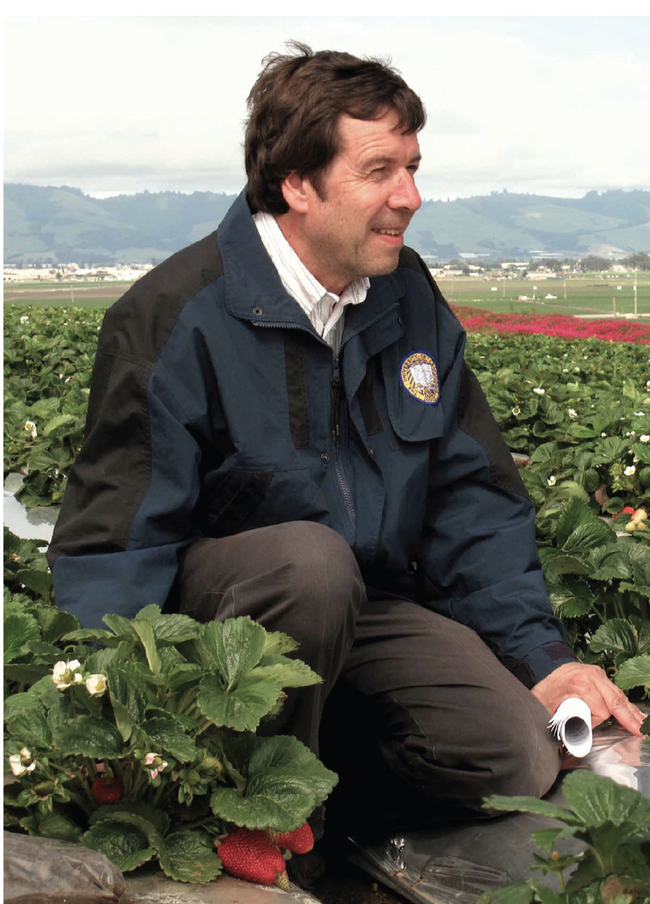
The UC Davis distinguished professor emeritus, an icon in the entomological world, especially in integrated pest management (IPM), grew up thinking that he might be working for the telephone company.
His father, an immigrant from Czechoslovakia, wanted him to obtain a college degree and pursue “a career with the telephone company,” Frank related. “Both of my parents worked for Western Electric, a part of AT&T.”
That proposed career did not happen. When he enrolled at Arizona State University, Frank chose to major in architecture before switching to zoology.
“In high school, I really liked mechanical drawing, and I was pretty good with math,” he told interviewer Marlin Rice on Feb. 14 for a Legends feature appearing in the summer 2023 issue of the American Entomologist, a publication of the 7000-member Entomological Society of America (ESA). “In 1970, there was the first Earth Day, and I got caught up in that. I wanted to do something to save the world from pollution and overpopulation. I became really interested in environmental issues. That's when I switched to zoology. At Arizona State, we collected scorpions for their anti-venom lab, and they would pay us a quarter a scorpion.”
Frank received two degrees from Arizona State, a bachelor's degree in zoology (1973) and a master's degree in ecology (1974), before earning his doctorate in entomology in 1978 from UC Davis, where he studied with major professor and agricultural entomologist Albert “Al” Grigarick.
“Frank was working for the U.S. Forest Service in Davis when he applied for graduate school in entomology,” Grigarick, now 95, said in an interview July 10. “When his application was circulating among our faculty for a major professor, I noticed his thesis was on a backswimmer. With a background in aquatic entomology, I wondered if he might be interested in doing research in our California rice fields. He did, was an excellent graduate student and soon got his PhD. He accepted an academic position at the University of Minnesota (assistant professor, 1979-1980, in the Department of Entomology, Fisheries and Wildlife) but the climate there may have played a role in his decision to apply for an IPM position in Cooperative Extension in California. I applaud the selection committee that accepted him. The University of California, California Agriculture, and the discipline of entomology have received countless benefits from his pursuits. I am very proud of Frank.”

A highly celebrated entomologist, Zalom is an ESA Fellow (2008), past ESA president (2014), and he holds ESA's highest honor, Honorary Member (2021), an honor achieved by only four other UC Davis entomologists: Harry Lange, 1990; Don MacLean, 1993; Bruce Eldridge, 1996; and John Edman, 2001.
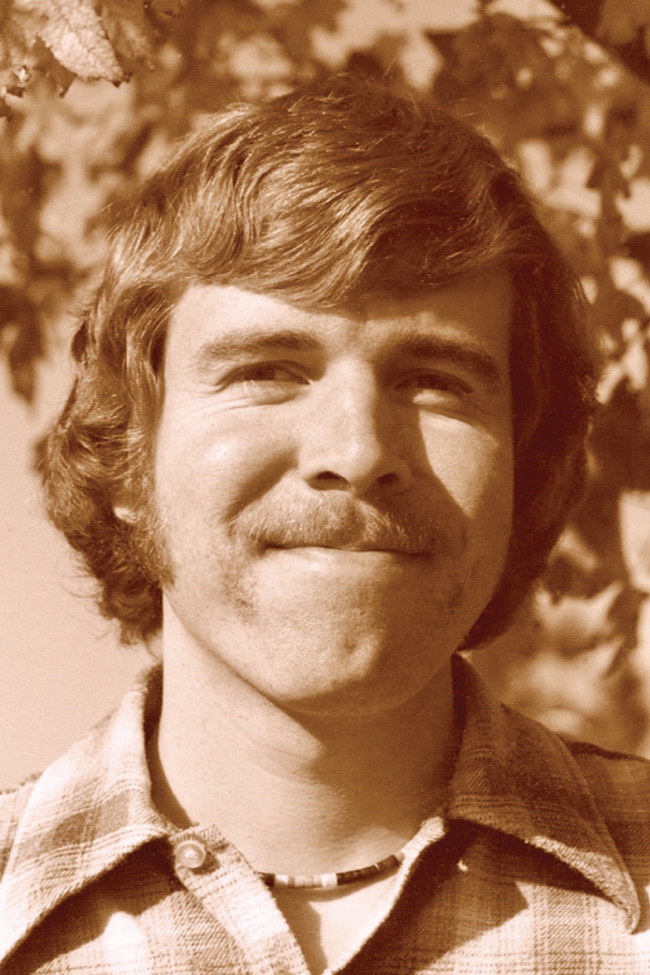
Zalom considers himself a “blue-collar entomologist.” As he told Rice: “That's the way I consider myself: somebody that doesn't mind getting dirty, who's interested in insects, likes to communicate with people, and wants to solve problems.”
Rice's article, Frank Zalom, Blue Collar California, is one of a series in his “Legends: Life Stories from Legends in Entomology” feature that highlights the careers of noted entomologists who are at least 70 years old and remain active professionally. Zalom is the second UC Davis entomologist to be featured in Legends. Rice chronicled the life and work of UC Davis Distinguished Professor Bruce Hammock in the spring 2020 edition.
“I am honored to follow Bruce as the second member of our department featured in this American Entomologist column,” Zalom said. Among his scores of credentials: Fellow of the Royal Entomological Society (2015), Fellow of the American Association for the Advancement of Science (2010),and the author of 376 journal articles or book chapters. (See Zalom's full CV on his website at https://entomology.ucdavis.edu/people/frank-zalom). He recently completed a 4-1/2 year term as Editor-in-Chief of ESA's Journal of Economic Entomology.
Zalom retired from the university in 2018 as a distinguished professor emeritus, but immediately joined the “recall professor” ranks.
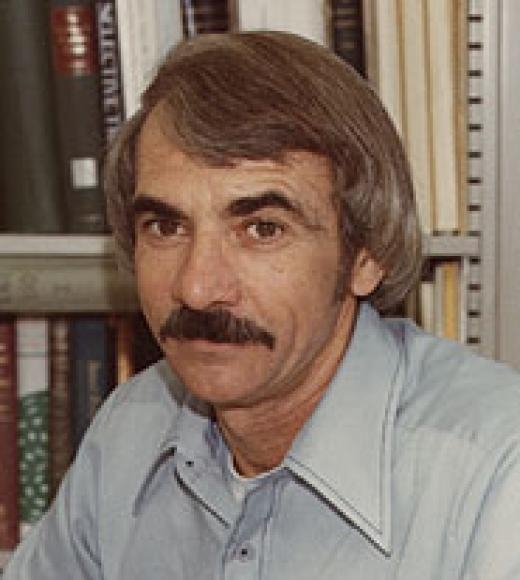
“Beginning in 1980 and continuing through today, Zalom has focused his extension and research activities on California specialty crops, including tree crops, small fruits, and fruiting vegetables,” Rice wrote. “The IPM strategies and tactics Zalom has developed include monitoring procedures, thresholds, pest development and population models, biological control, cultural control, and use of less toxic pesticides, which have become standard practice and part of the University of California IPM guidelines for these crops.”
Rice added: “The Zalom lab has responded to numerous newly identified or invasive pests in the last two decades, with research projects on glassy-winged sharpshooter, olive fruit fly, a new biotype of greenhouse whitefly, light brown apple moth, grapevine red blotch disease, brown marmorated stink bug, and spotted-wing drosophila, among others.”
Some excerpts from the American Entomologist article, as shared by Rice:
What was your first memorable experience with an insect?
“I was raised in Arizona, and it may have been when I was six or seven years old. We had very sandy soils, and we'd see cone-shaped pits with an antlion in the bottom. We'd drop other insects in there for them to grab. That was the first time I ever thought much about insects.”
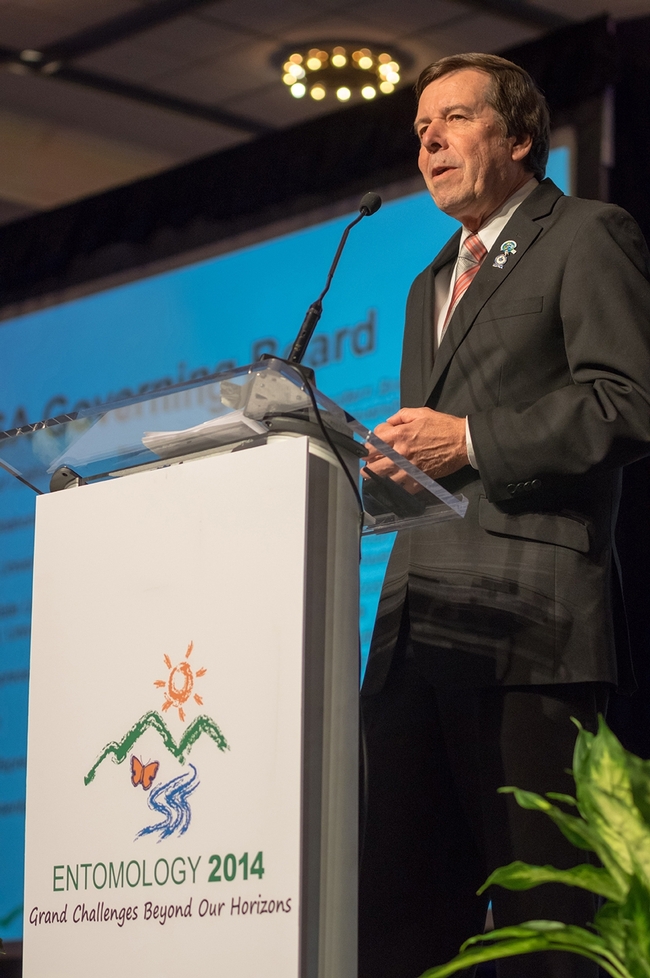
“In those days, there were a lot of required ‘-ology' type classes. I took general entomology, taught by Frank Hasbrouck. I did well in the class and thought it was interesting. Another class I took was aquatic insects; that was taught from an ecology perspective. I liked working with insects, but I never imagined I would do anything related to entomology when I finished. I also did a summer job at the USDA cotton lab in Phoenix, working with their sterile male release program and sweeping cotton fields for pink bollworms. I did it for a job, but I learned more about research.”
What was your greatest challenge as an undergraduate or graduate student?
“Just to figure out where I would be going with a career. I always had this ‘working for the telephone company' mentality, which I did not want to do. If you don't come from an academic background, you only associate professional jobs with doctors, lawyers, teachers, and teaching was something I knew I could do. As I started to mature academically, I realized there's a whole world out there I wasn't aware of. More things than being a doctor, lawyer, or teacher.”
You are officially retired but still working as a recall professor. When I hear the word ‘recall,' I think of something that is broken or not functioning correctly, like an automotive part. I assume that's not what recall means here?
“No, although there are days when I feel like I am not quite functioning properly. At UC, you can get recalled and paid part-time, and in my case, it allows me to keep my lab and most importantly to stay active in research. The funding comes from the California Department of Food and Agriculture primarily for consulting on pesticide uses, alternatives, and impacts of proposed regulations. This is helpful for the state because I have a solid understanding of pests and pest management in California crops, and I have established a good deal of mutual trust and understanding with growers' groups. In this role, I can impact pesticide policy and help maintain some of the most critical chemical uses.”
What is your philosophy of extension?
“It's about putting your foot in the other person's shoes. I try to understand the grower's perspective and needs, then approach the job like problem solving. Although I've always tried to reduce the negative impacts of pesticides, I also work towards implementable alternatives. The growers appreciate it. They know I'm not trying to take the pesticides from them without offering an alternative. That was a concern from the ag industry early in the UCIPM program, which was funded by the state legislature to reduce pesticide use, and the growers were worried that it would contribute to more regulation.”
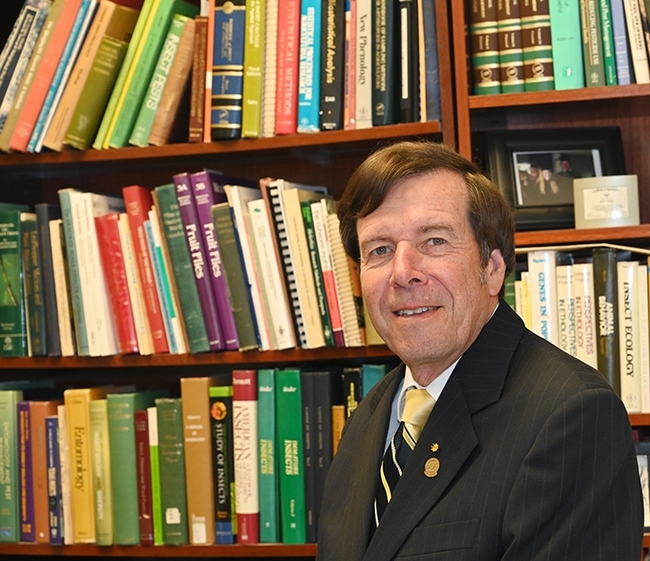
“Playing a role in getting the UC IPM program recognized as an integral part of the university system and gaining its acceptance by growers. But I didn't do this by myself, of course. We had a team of very talented people who were passionate about IPM and worked well together. I was fortunate to help facilitate it and keep the momentum going.”
You studied numerous insects. What's a favorite and why?
“The spotted-wing drosophila is my favorite. There's just so much that can be done with it. It's easy to rear, has a short generation time, and an economic problem. And it's a Drosophila after all, so it brought me back to population genetics, which I enjoyed many years ago. Working with geneticist Joanna Chiu has enabled me to learn about molecular techniques. She's great to work with and is patient with an old guy like me.”
Chiu, who became chair of the UC Davis Department of Entomology and Nematology on July 1, 2023, commented July 6: “Frank has been an amazing and supportive mentor and friend since the day I met him. He welcomed me with open arms into the department when I first started as an assistant professor and introduced me to research in Agricultural Entomology. Given my postdoctoral training in biomedical sciences in the Drosophila model, I must have sounded so naive when we first started our now decade-long collaboration on the fruit pest Drosophila suzukii, but he has always been so patient as a mentor. He is literally a walking encyclopedia; I have learned so much from him and continue to do so every single time I talk to him. I have been so lucky to have Frank as a mentor!"
What does Zalom, as a long-time Extension entomologist, see as the future for Extension? He told Rice: “…I think extension is tremendously important and it is one of the things that has made the land-grant university system unique in the world. Five years ago, I might have said, ‘The future's bleak in California.' And if California's budget problems got really bad, I'm not sure that it would survive. The campus and county links were becoming increasingly strained as retirements were greatly reducing the numbers of specialists and farm advisors, and the ability to respond to problems locally became increasingly difficult. The traditional extension model didn't reflect the current way information is being transferred, either. In California, there are well-established crop consultants that advise growers and large farming operations with their own crop and pest management staffs. Recently, budgets have increased in extension and people are being hired again. But many new positions reflect working on more thematic problems like fire and climate. Roles have shifted for extension, with farm advisors and specialists assuming more of the traditional experiment station applied research role. California extension is in transition.”
Other questions and answers published in the American Entomologist article include:
Do you think the future is bright, but just different?
“I think it is bright, because there remains a need for university-based applied research programs. The traditional extension programs where you'd regularly meet with growers—there's going to be a different model for that. More electronic transfer of information, more electronic meetings, but it loses something.”
What great question in agricultural entomology or agricultural policy would you like to see addressed before you call it quits?
“The biggest challenge is invasive species. Accepting that they will get established and how will you manage them from a practical and policy standpoint. They're probably not going to be eradicated, so less emphasis on eradication and more on management. And dealing with trade issues, which are deeply political. How do we manage invaders on a world scale to keep them out of the chain of trade? I would like to see policymakers address that at some point. But right now, it's a losing battle.”
Any other questions to address?
“Another is the potential for using pesticides on a prescription basis. If an insecticide presents a human health or environmental hazard, maybe somebody should be trained and licensed to prescribe its used safely under less risky circumstances. That's a policy to consider instead of eliminating the ability to use pesticides that have value. Ultimately, too many materials are lost because the ag industry fights use restrictions right to the end. Maybe proposing prescription use is some way of maintaining useful products.”
As president, you issued some Grand Challenges. Do you feel like those gained any traction?
“They got people talking about important issues that the entomological community can address, so in that respect, I think it did. It also helped ESA's global initiative by partnering with other international societies, particularly with the Entomological Society of Brazil. I noticed the Royal Entomological Society has established a Grand Challenges initiative to identify how to improve the human condition.”
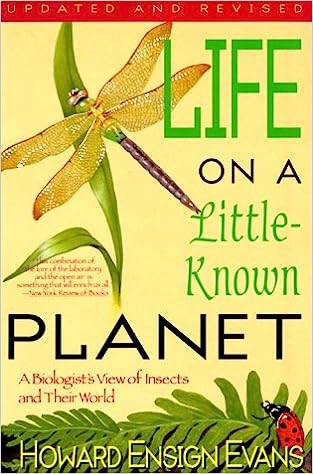
“A good one is Life on a Little-Known Planet: A Biologist's View of Insects and Their World [by Howard Ensign Evans]. It tells why insects are important and the research that led to important discoveries. If you're not interested in that sort of thing, then maybe you shouldn't be studying entomology or pursuing it as a career.
In the Rice interview, Zalom also touched on his family. “Family comes first in my life, then work. I still bring a lot of entomology-related work home with me. Honestly, it's pretty bad. (Laughs). I may have gotten a job in marine biology, but I wouldn't have been any happier.”
Zalom is married to the former Janet Smilanick, who received her master's degree from UC Davis in the 1970s. Her major professor was chemical ecologist Martin Birch (1944-2009), who served on the UC Davis faculty from 1973 to 1981, chairing the department from 1979 to 1981 before accepting a faculty position at the University of Oxford.
The couple married when Janet was Professor Marjorie Hoy's staff research associate at UC Berkeley. Hoy was also featured in an American Entomologist ‘Legends' article in fall 2019. The Zaloms have two children (Martina, an oncologist and Frank Nicholas “Nick,” a lawyer) and four grandchildren, ranging in age from two months to 11 years.
Neither Martina nor Nick expressed interest in following in their parents' entomological footsteps.
Martina, who received her bachelor of science degree in bioengineering from UC Berkeley and her medical degree from UC San Diego, is an oncologist/hematologist with Kaiser Permanante, Roseville. She served on the staff at Olive View/UCLA Medical Center, Los Angeles, before returning to the Sacramento area about four years ago.
Nick, who received his bachelor of science degree in economics from the U.S. Naval Academy, Annapolis, and his law degree from Georgetown University, Washington, D.C., is a senior associate with the law firm of Orrick, Herrington, and Sutcliffe in Sacramento. Nick served three deployments as an officer in U.S. Navy, doing drug interdiction in central and South America and port security in the Persian Gulf. Like Martina, he also returned to the Sacramento area about four years ago.
Meanwhile, Zalom has added another position to his curriculum vitae: he recently accepted a position with the USDA's National Institute of Food and Agriculture (USDA-NIFA) as Panel Manager for the 1890 Capacity Building Grants Program.
His footprints and legacy in the entomological world continue.



